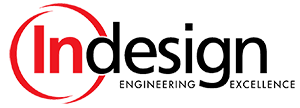In our previous blog, we made the case for why requirements are so important. Convinced of their importance, we started a process improvement initiative in 2019 within our embedded software team to improve our approach to requirements. As an ISO 9001 certified company, we have a quality management system which includes processes for our engineering disciplines. Our mission was to review and improve our firmware processes and tools related to firmware requirements to promote better outcomes for our company, our engineers, and our clients.

Our Research
We took a deep dive into a tall stack of books, articles, papers, and guides, including:
- Software Project Survival Guide, McConnell
- The Pragmatic Programmer, Hunt and Thomas
- Fast-Forward MBA, Verzuh
- Code Complete, McConnell
- INCOSE Systems Engineering Handbook
- Software Estimation, McConnell
- Software Engineering Body of Knowledge, V3
- NASA System Engineering Handbook
- ISO/IEC/IEEE 29148:201
- Why Employees Don’t Do What They’re Supposed To and What You Can Do About It, Fournies
- Internal records, notes and resources
Based on that review of source material from requirements experts, we developed changes to our engineering processes, proposed them to our team, and made some changes. We also developed new tools. We knew that changes to our process, like any change, would face challenges. So we spent some time thinking through those challenges and developed an implementation and communication strategy.
Changes We Made
The changes we made impacted the way we approach defining the scope of a new project with a client. We overhauled one of our main checklists to reflect the things we’d learned surveying all our resources. Some of the things we learned translated perfectly into our updated checklist. Sometimes you just need to remember to ask certain questions, and a checklist is a great way to create those reminders. We also updated several of our other procedures and tools related to the architecture and development phases of a project. Other things we learned didn’t translate directly to our quality management system and engineering processes, so we decided to create a requirements guide as a way to capture everything else.
Process Improvement Initiative
The process improvement initiative helped better frame the way we approach requirements. In our next blog of the series, I’ll expand on how we have used that mindset to capture better requirements and produce better outcomes on projects.
For more information about our requirements process and to learn more about our company or our services, please contact us at (317) 377-5450. Indesign, LLC proudly provides electrical design, software design, mechanical design & engineering, and much more.
